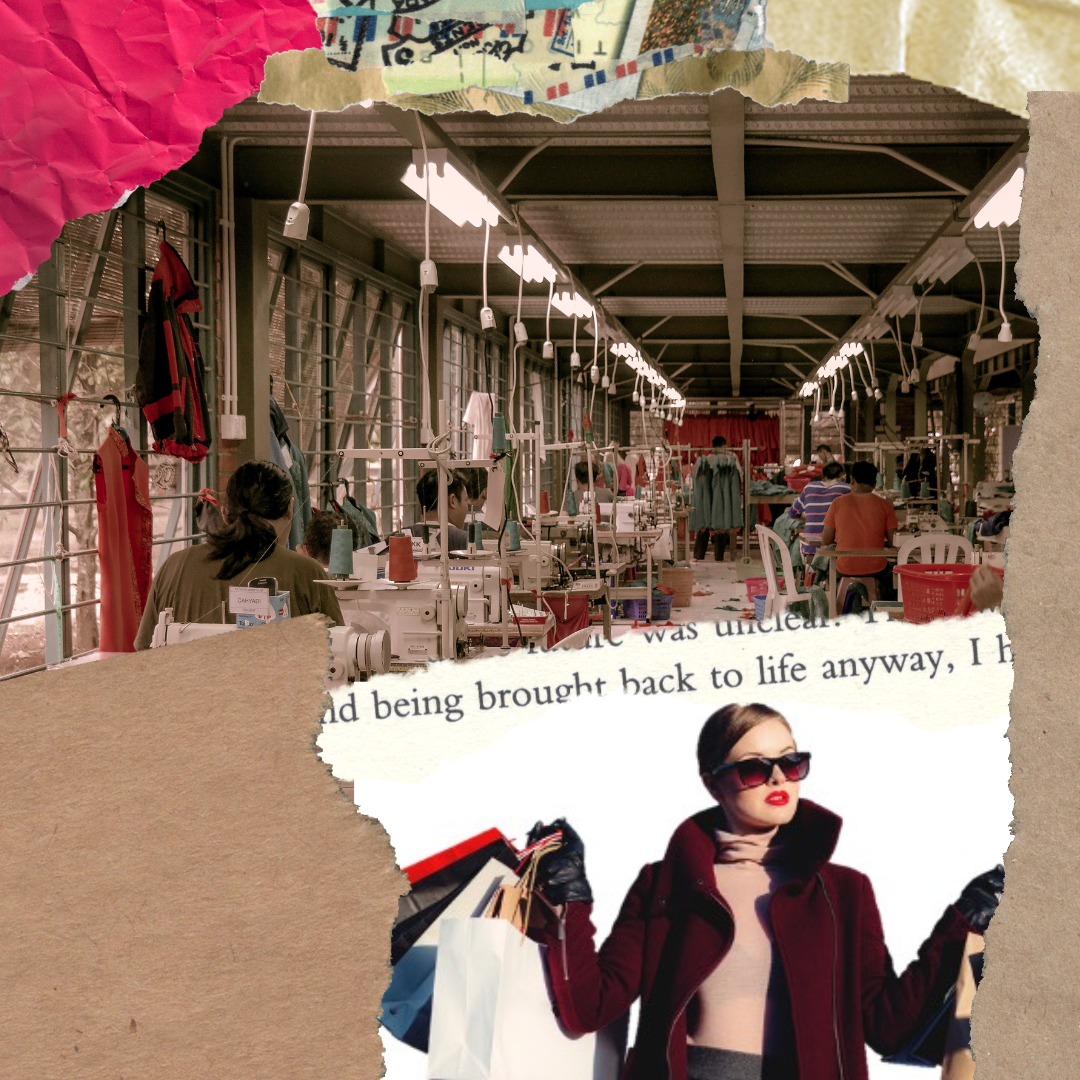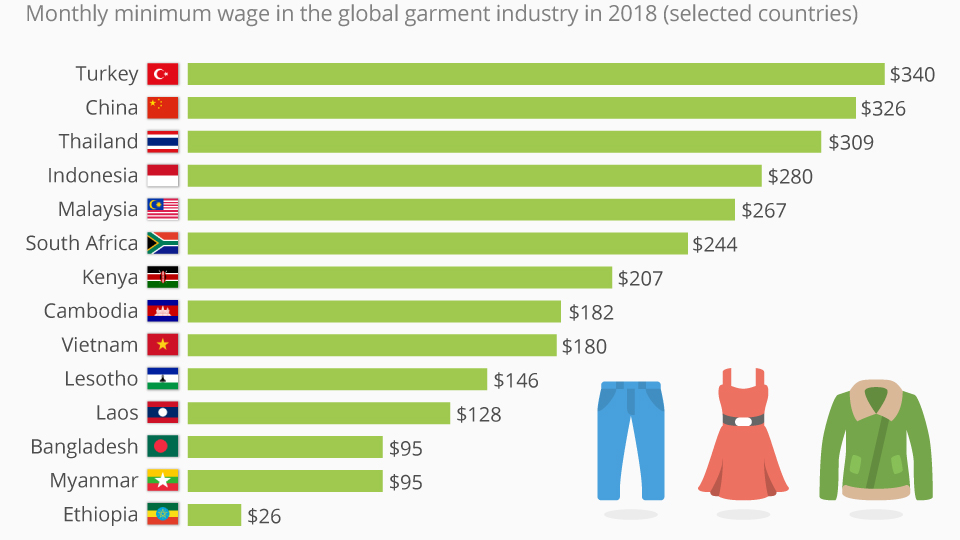A New Season for the Fashion Industry

A critical look at 21st century fashion and interview with Eva Stam, designer and upcycling expert
Impress, attract, protest, reveal. Are the statements we shout to the world by shaping our image with combinations of fabrics and colors. Style is the first form of expression we use to show our tastes and the way we dress is the most accessible form of creativity. Allowing us to communicate something to the outside world; we are essentially a living manifesto.
Fashion gives us the opportunity to reinvent ourselves every day thanks to new collections that appear in the windows every two weeks. But who is holding the strings of this fast-fashion game?
From sourcing of raw materials to shipping and retail, the fashion industry, the 3rd most polluting on a global scale, accounts for 75 million workers and is built on an intricate network of stakeholders [1]. How case these garments be sold on our markets for a few euros? How are the production costs externalized?
Low prices at a high cost
The answer lies in the lack of regulation for hired labor. Garments workers’ salaries are indeed lower than the calculated living wage [2]. Fast Fashion brands (and not only) have maximized their profits. By lowering production costs: and displacing their manufacturing facilities to lower-income countries. In India, Pakistan, Cambodia, and Bangladesh, where many factories are found. The minimum daily wage for textile workers is $95 per day, and the working conditions are poorly regulated.

Having to comply with increasingly lower and competitive production costs. These companies tend to reduce investments in safety measures at the expense of the workers. Which are often minors or women without union representatives.
The collapse of the Rana Plaza factory in April 2013, during which 1134 people died in less than 90 seconds. evealed to the general public the unfair working conditions of garment workers. A thousand one hundred thirty-four people, the same ones who might have made the beautiful shirt you find on the shelf of your local stores for €9.99. With what currency will we have to pay for the loss of these lives?
On the way to a sustainable supply chain
This tragedy became a driver of change and led to the creation of a new way to relate to fashion. After the catastrophe of 2013, a more conscious attitude began to develop toward the purchase of clothing, giving rise to an ethical approach to fashion choices. In 2014, the ‘Fashion Revolution’ was born, a worldwide movement that appeals for business’s fair and equitable transformation [8].
Many stylists and companies started raising sustainability standards and supporting female emancipation. Online platforms such as Etsy promote the spread of craftsmanship and locally made products, emphasizing the principle of quality over quantities.
To get an insight into local circular fashion initiatives I had a chat with Eva, a designer based in Breda busy developing upcycled products and sharing her sartorial knowledge to reduce waste, by teaching how to fix your own clothes. Eva has a workshop at STEK, a hub for innovation and development of sustainable solutions.
Could you tell us about yourself and how the upcycling project started?
I have two companies Tribe 8, where I upcycle fashion products and Stam Indoor, which is focused on interior design by upcycling military tents and other residual materials.
During my fashion and design studies, I was taught about the high environmental impact of the clothing industry, such as leather products which often end up polluting rivers. I started gathering more information and watching documentaries, which made me realize I didn’t want to work with the fast-fashion approach and contribute to the production of unsustainable garments. So, I decided to quit for a bit and think about how I can make a difference.
I started experimenting with my old clothes and looking at what could be adjusted: ‘I like this print, but this is too small, or there is a hole inside; what can I still do with the rest of the fabric?’; and then upcycled them accordingly. It turned out to be a very good system, so I started giving workshops for Tribe 8 on a regular basis and I built up a small collection, which is also for sale.
What are the workshops like?
During the workshops, people bring their own fabrics and make a design out of the old fabrics leaving out the ‘bad’ or damaged spots and creating something new. They learn how to repair their own clothes and go home with an upcycled item.
If you look at our grannies, they all know how to sew, but the times are changing, and this ability is getting lost. Thus, the idea is that people get back to fixing their own clothes and can wear them for longer. Instead of disposing of them after one or two years.
Which fabrics can be upcycled?
I only work with natural fibers like cotton or 100% wool, which are long-lasting and easier to upcycle. I don’t really use nylon nor other synthetic fabrics. We aim for high-quality stitches and try to avoid jersey fabrics that have stretches.
Often, I work with vintage clothes from local drift shops. These items were around for so long already (3rd, 4th hand), meaning that the fabric is durable. Imagine you find an ugly but good-quality sweater. When you know how to fix it you can look at it twice and give it a second life.
What can consumers do?
Repair, buy less, go to 2nd hand stores, but also check your own closet. And think about how you can upcycle them. The key is not to be afraid to make a new style for yourself and go out of the schemes. On Pinterest, for example you can find a lot of interesting ideas. Otherwise come by and follow one of the Tribe 8 workshops.
Lastly, Eva told me her recipe for achieving a 0-waste production system. Which consists of repurposing the residual materials for filling bean bags, within her interior design project (Stam Indoor). Fabrics, zips and cuttings are mixed with old pillow’s filling so that no material is left behind. After all, If you want to be 0-waste, you have to make up your own solution!
Tribe 8 and the many other initiatives creating sustainable solutions are proof that a U-turn is possible: the unsustainable system of Fast Fashion can be revolutionized. This is our chance to communicate something to the world, fighting for transparency, social and environmental justice.
The premises for sustainable progress are already established. You just have to choose.
